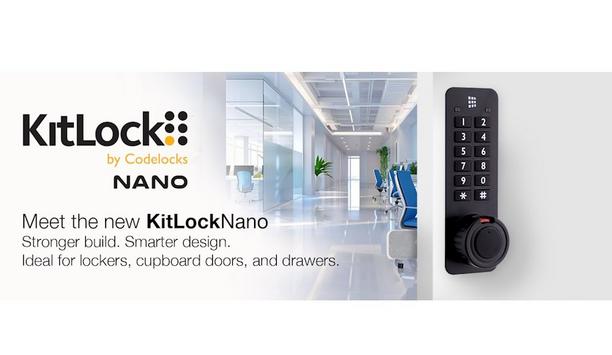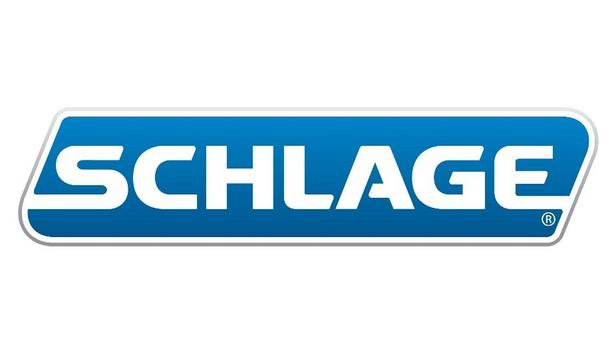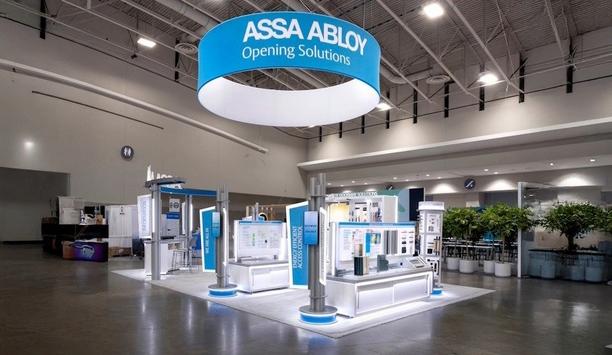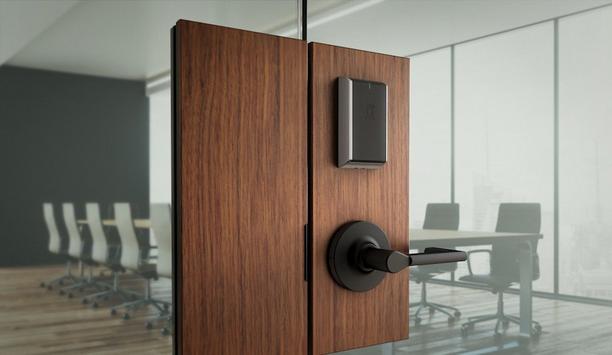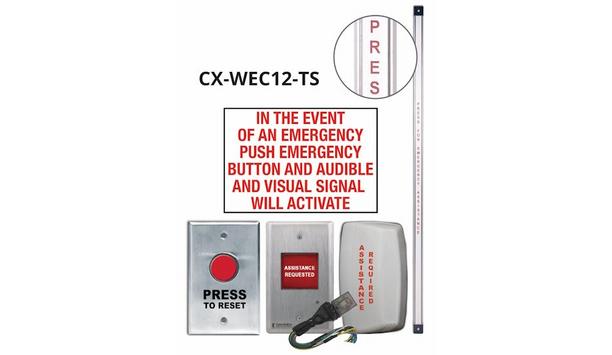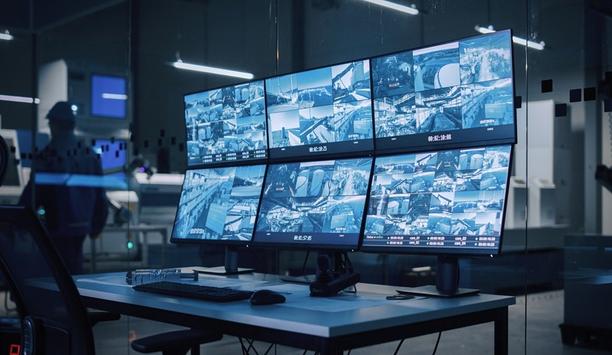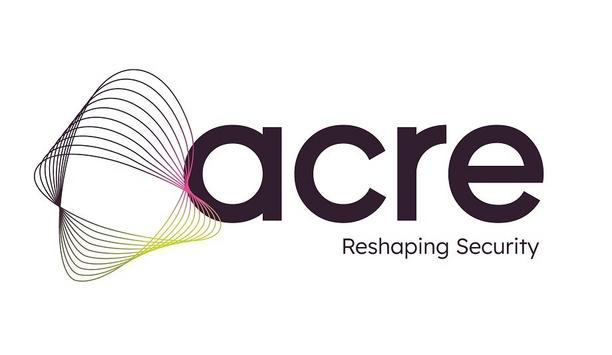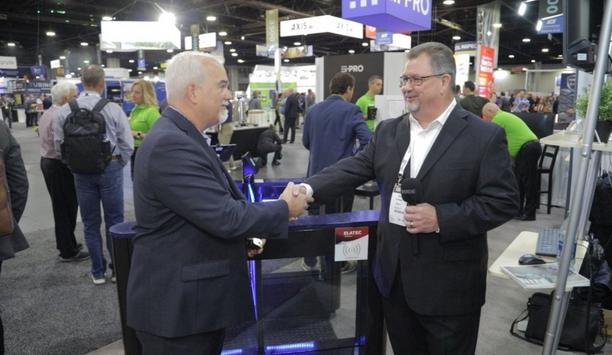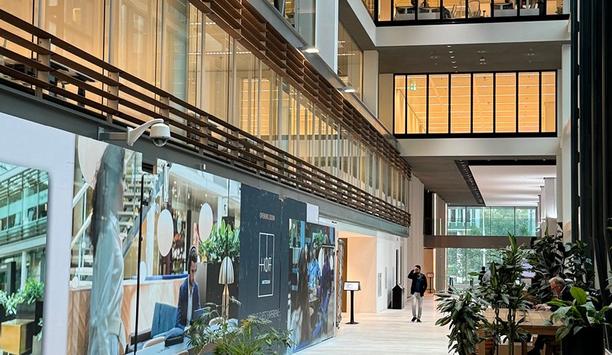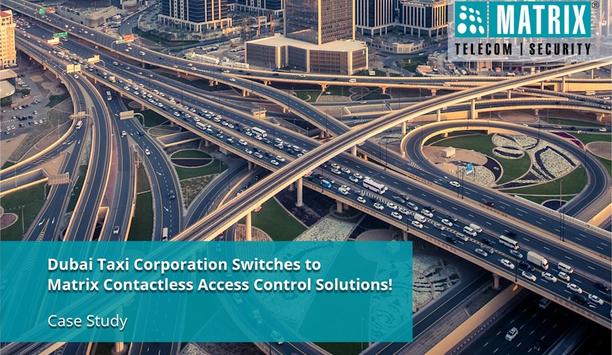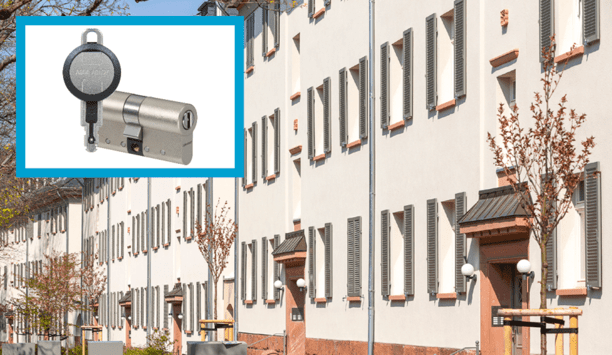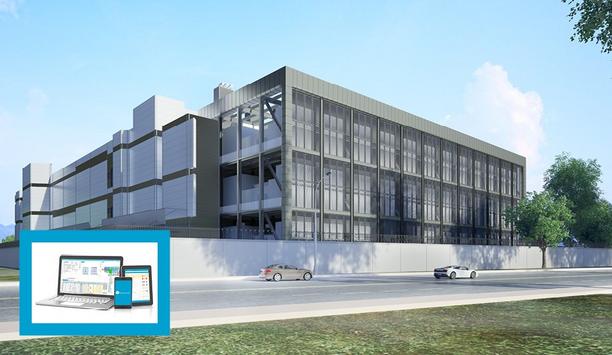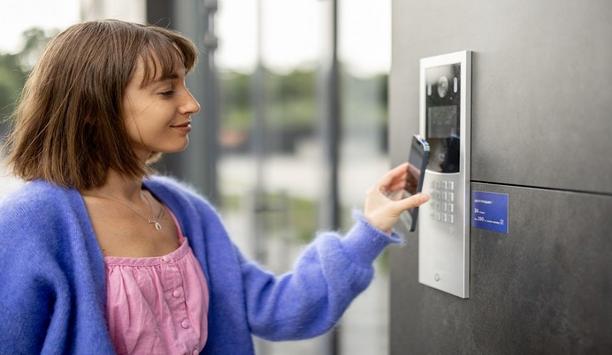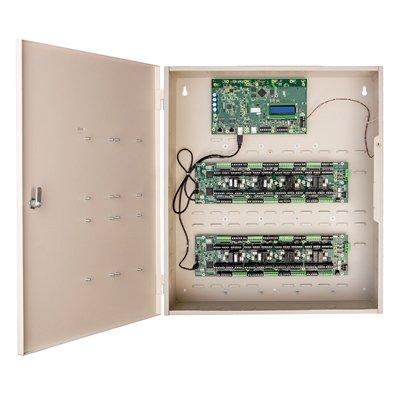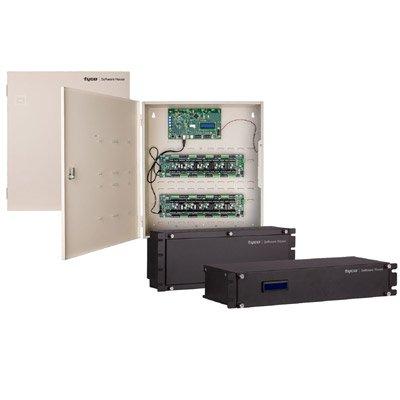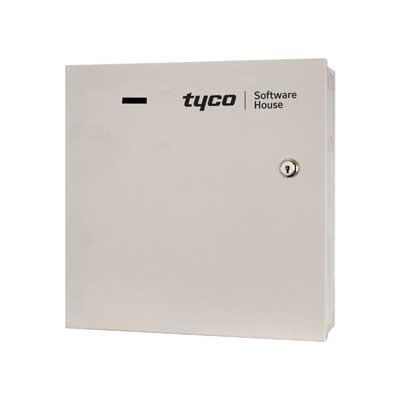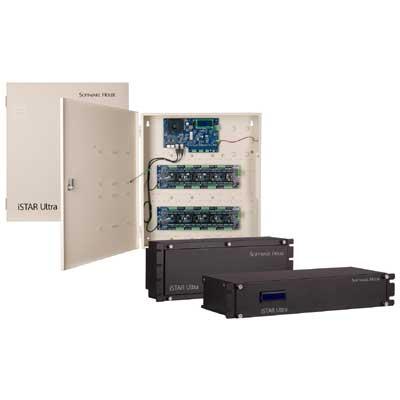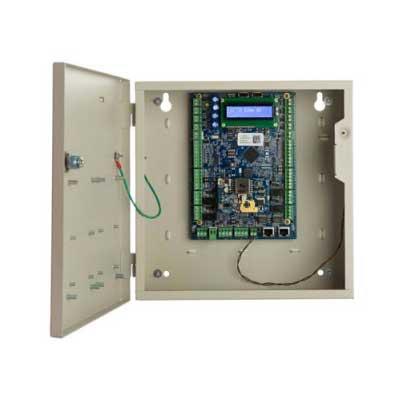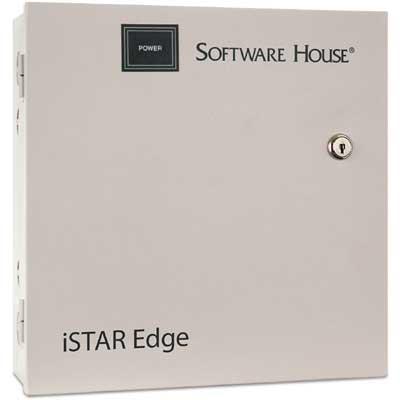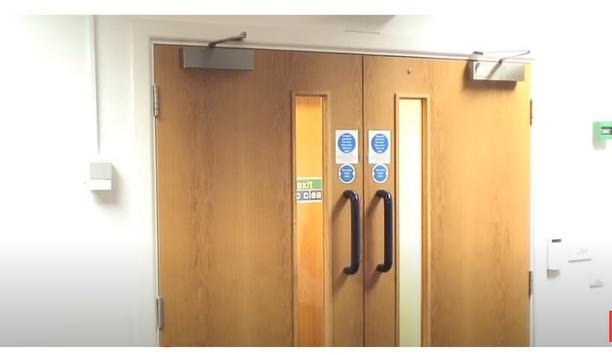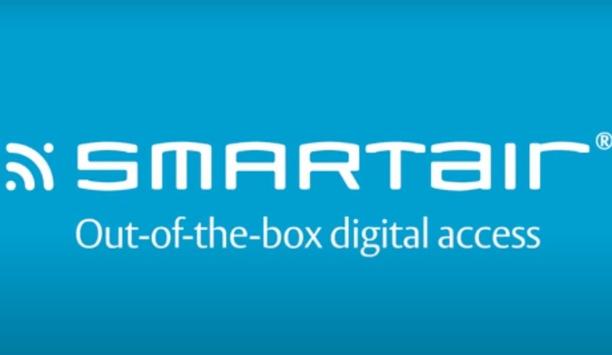Door security
Codelocks launches its KitLockNano, a redefined compact lock, engineered with a stronger build and smarter design. The upgraded lock delivers improved performance and functionality in the same ultra-small footprint as the original, while including a key override for complete control in any situation. Ideal for lockers, cabinets, and drawers, the KitLockNano addresses the growing demand for modern, reliable access control in environments like workplaces, sports facilities, and hotels. Reenginee...
ASSA ABLOY has acquired International Door Products (“IDP”), a US manufacturer of standard and custom fire-rated steel door frames. "I am very pleased to welcome IDP to ASSA ABLOY. This acquisition delivers on our strategy to strengthen our position in mature markets through adding complementary products and solutions to our core business,” says Nico Delvaux, President and CEO of ASSA ABLOY. "This acquisition marks an exciting milestone for ASSA ABLOY Opening Solutions Americ...
Allegion US, a pioneering provider of security solutions, technology and services, is excited to announce the release of a series of enhancements to their LCN 2800IQ and 9500IQ Senior Swing series operators, including the patent-pending, self-adjusting technology, AdaptivIQ. Built for durability and efficiency, the LCN Senior Swing offers year-round performance and peace of mind in heavy-use applications including healthcare, offices and other high-traffic areas. From the fully loaded controll...
Schlage, America’s Most Trusted Lock Brand and pioneer in door hardware innovation for over a century, now announced the latest limited release from Pin & Tumbler™ A Studio by Schlage — the Refined Finishes Collection. Designed to elevate everyday spaces with subtle sophistication, the collection introduces three new finishes that embody quiet elegance and refined design. Design innovation “Design innovation is not always about bold statements — it’s al...
ASSA ABLOY Opening Solutions will be returning to Greenbuild 2025, the world's largest annual event for green building professionals. This conference and expo is a global platform for sustainable building. Held from November 4–7, 2025, in Los Angeles, it brings together architects, engineers, owners, and sustainability pioneers to explore innovations, educational opportunities, and products that advance the future of green design and construction. Door and access solutions ASSA ABLOY he...
Addressing one of the most critical issues affecting society, the education and healthcare communities, parents in Pennsylvania and throughout the United States, and — above all else — students in higher education and K-12, ASSA ABLOY Door Security Solutions Tri-State is hosting an important summit on security and life safety in Philadelphia. The summit will feature experienced experts from major universities, school districts, healthcare, and law enforcement to explore collaborativ...
News
ASSA ABLOY Opening Solutions will be returning to GlassBuild America, the largest annual trade show in North America for the glass, window, and door industries. Happening November 4-6 at the Orange County Convention Center in Orlando, Florida, GlassBuild America is where buyers and sellers meet and learn how to solve their most pressing challenges. The action-packed event features networking between exhibitors and attendees, and experiencing new technology and products. ASSA ABLOY Opening Solutions will showcase its latest innovations in comprehensive door security and digital access control at booth #15007, which is conveniently located near the front entrances. Innovation in the glass industry “The show provides an excellent opportunity to showcase the creativity and innovation happening in the glass industry,” stated Tyler Baker, Director of Business Development for Glass and Aluminum at ASSA ABLOY Opening Solutions Americas. “It’s always exciting to engage with designers and partners who share our passion for blending aesthetics, performance, and security in modern architectural solutions.” Range of door security solutions ASSA ABLOY continuously expands its range of door security solutions and innovates to improve security, safety, energy efficiency, and convenience. The company focuses on creating designs that integrate aesthetically pleasing elements into the spaces they enhance. The solution lineup at GlassBuild 2025 includes: Rockwood PDU8000 Panic Device The device’s engraved push area and boundary grooves make exit doors stand out in a crowd. Now ANSI/BHMA A156.44, Grade 1 certified, this durable product offers keyed and non-keyed functions, new bent end return and two-piece configuration options, and a selection of finishes, providing a customizable design. Available to pair with manual or electric strikes, this line provides beauty, security, and peace of mind. Bruken DL-GS3550 Digital Glass Door Lock Provide keyless access control to your all-glass interior openings with the Bruken DL-GS3550 Digital Lock from ASSA ABLOY Glass Solutions. This field-reversible device is ideal for retrofit applications and features three modes of access, including fingerprint identification, numeric passcode, and smart card. This multi-user lock requires no glass fabrication for easy installation and is compatible with single or pairs of glass doors that are 3/8" - 1/2" thick. Control iD iDFace Max With its modern design and elegant finish, iDFace Max is the ideal device for monitoring and controlling venue access through facial identification technology. Its advanced algorithm and high-quality cameras allow the identification of up to 100,000 faces (1:N) with face liveness detection and identification of users with and without a mask. iDFace Max has an integrated SIP intercom with TCP/IP, USB, and PoE connectivity. The device also features a large 7-inch LCD touchscreen display, allowing for easy and intuitive navigation to configure access rules and view reports. ASSA ABLOY ACCENTRA nexTouch Cylindrical Lockset Combines a sleek, modern design with advanced access control technology, delivering a stylish yet secure solution for a wide range of facilities. With a heavy-duty construction and ANSI/BHMA Grade 1 certification, nexTouch ensures durable and dependable performance. This standalone electronic lock features modular technology, allowing seamless upgrades to Data-on-Card functionality. Available with either a capacitive touchscreen or pushbutton keypad, nexTouch® provides an ADA-compliant, user-friendly system engineered to safeguard your facility and personnel. Rockwood OptiCoat Finishes Offering realistic wood and marble patterns for door hardware of all kinds, OptiCoat is ideal for elevating projects where every detail matters, including upscale hotels, offices, and multi-family spaces. With 13 readily available finish options, plus custom capabilities, matching opening hardware to the overall style of your facility has never been easier. Centrios Centrios allows small businesses to manage access to their business by connecting their Centrios locks and smart readers with a simple-to-use mobile app. With Centrios, it’s simple to unlock doors with a touch of a phone, manage access for all employees and visitors in one place, and view audit and event reports. ASSA ABLOY is committed to expanding its solution lineup, along with adding top-of-the-line products to its quick shipping programs. ASSA ABLOY experts are here to listen and ensure that they are meeting the industry's needs. Please stop by the booth to meet with experts from ASSA ABLOY Glass Solutions and Rockwood.
ASSA ABLOY has acquired Metal Products Inc. (“MPI”), a US manufacturer of custom-made hollow metal doors and frames. "I am very pleased to welcome MPI to ASSA ABLOY. This acquisition delivers on our strategy to strengthen our position in mature markets through adding complementary products and solutions to our core business," says Nico Delvaux, President and CEO of ASSA ABLOY. MPI's strong reputation "MPI has built a strong reputation in our industry for trusted, consistent delivery and exceptional customer focus," says Lucas Boselli, Executive Vice President of ASSA ABLOY and Head of the Americas Division. He adds, "Their best-in-class lead times for custom metal doors and frames, combined with their strategic footprint in the US, make them a valuable addition to our division. This acquisition enhances our product offering and strengthens our ability to serve customers with speed, reliability, and regional expertise." MPI's main office and factory MPI was founded in 1980 and has some 170 employees. The main office and factory are located in Corbin, Kentucky, USA. Sales for 2024 amounted to about MUSD 22 (approx. MSEK 230) with a good EBIT margin. The acquisition will be accretive to EPS from the start.
Smart buildings take a connected approach to managing and monitoring who is coming into and going through them. For almost every user, whether visitor, staff or contractor, the building journey begins with a door. A 2025 report by analysts Memoori suggests that the global IoT market in commercial buildings will grow to $101 billion (€87.5 billion) by 2030, at a baseline predicted CAGR of 7.9%. Memoori identify offices, retail premises, data centers, and hospitality businesses as probably early adopters of smart building technology. Secure buildings The smart building will streamline the experience for both users and managers The smart building will streamline the experience for both users and managers. When fully implemented, it promises buildings which are more secure; that make better use of energy; and which will make data-driven decisions in real time. On the basis of these concrete benefits, analysts forecast rapid growth. According to Fortune Business Insights, the market will grow from a value of $143 billion (€122 billion) in 2025 to $548.5 billion (€469.5 billlion) by 2032, at an estimated 21.2% CAGR2. Security systems and technologies will be a significant component of this growth. Door closer In a world of smart sensors, building management dashboards and real-time analytics, the door closer is easy to overlook. Yet in creating tomorrow’s generation of intelligent buildings, this device will play a critical role. Modern high-spec door closers do far more than simply shut a door. They help preserve climate zones, reduce noise, support fire safety and accessibility, and enhance security and convenience, throughout the wider building. For security, the door closer is essential. A door left ajar – whether by wind, human error or wear and tear – undermines access protocols and protections. Intelligent closers work alongside digital locking and access systems to ensure doors shut reliably behind every authorized user, reducing the risk of tailgating. Fire safety strategy This supports safer evacuations and regulatory compliance without compromising day-to-day convenience A certified door closer is also a key component in fire safety strategy. When integrated with fire alarm systems, closers allow fire doors to remain open during normal use, but close automatically in an emergency. This supports safer evacuations and regulatory compliance without compromising day-to-day convenience. From a sustainability standpoint, the contribution is also tangible. A closed interior door helps to maintain temperature differentials, between an office and the corridor, for example, or a server room and an atrium exposed to climate variations. Improved energy efficiency Fully closed interior doors help reduce stack pressure – the unwanted inflow of air at lower levels, caused by rising warm air within the building – which can otherwise disrupt HVAC performance. Even a single poorly closed door can force HVAC systems to work harder, leading to unnecessary energy waste. A door closer ensures these doors shut gently but securely every time, supporting improved energy efficiency metrics. Smart door, smarter building ASSA ABLOY intelligent door closers are designed to work as part of a broader Building Management System In a connected building, integration is everything. ASSA ABLOY intelligent door closers are designed to work as part of a broader Building Management System (BMS). They integrate seamlessly with access control, fire alarm and HVAC platforms, helping the building to become more responsive, more secure, and more efficient. “Every model in our range of award-winning door closers is engineered for performance, durability and aesthetics. As you would expect, they meet or exceed critical EN 1154 compliance requirements and in most cases, are certified for use on fire doors,” says Andreas Gmelin, Product Management and Business Development Director from ASSA ABLOY Opening Solutions EMEIA. Improved smart building performance “Increasingly, they are also designed, from the ground up, by paying attention to their growing role within an intelligent building environment. They can be responsive and be used together with other components in a smart building, focusing upon access, energy and life safety,” continued Andreas Gmelin. He adds, “In short, they are no longer just robust, convenient hardware working in isolation to perform a single important task. Door closers are now a key enabler of improved smart building performance, which benefits every user and makes life easier for building managers.”
ASSA ABLOY Entrance Systems announced that ecoLOGIC has been awarded the first TÜV SÜD test mark for Low-Risk AI, making ASSA ABLOY the first manufacturer to receive the newly launched mark. The voluntary program provides third-party validation for AI applications considered low risk under the EU AI Act, where no mandatory legal testing is required. AI to fine-tune door parameters ecoLOGIC uses AI to fine-tune door parameters such as door speed, hold-open times and closing behavior to strike the right balance between people flow and comfort. ecoLOGIC helps reduce energy loss at access, yet saving skills money and reducing their carbon footprint By optimizing these parameters, ecoLOGIC helps reduce energy loss at entrances, ultimately saving facilities money and reducing their carbon footprint. In addition, unnecessary movements of the door are decreased, minimizing wear and tear, lowering maintenance needs and extending product life, which is especially valuable in high-traffic environments. Energy savings and reduction in opening cycles “Receiving TÜV SÜD’s new AI test mark is a powerful signal to our customers,” said Martin Sagnérius, Head of Digital Services at ASSA ABLOY Entrance Systems. “It independently validates ecoLOGIC’s performance and reliability, and reinforces the measurable energy savings and reduction in opening cycles that our AI delivers at the entrance.” How low-risk AI can deliver practical efficiency gains “ASSA ABLOY ecoLOGIC shows how low-risk AI can deliver practical efficiency gains in building operations with transparent, well-controlled methods." "Our test mark makes that quality visible to building owners and end users,” said Benedikt Pulver, Head of the Machine Safety Department at TÜV SÜD. Data security and operational reliability Certified to ISO 27001, ecoLOGIC operates independently from local IT networks, ensuring data security and operational reliability, and delivers intelligent automation that enhances both security and sustainability. Following ecoLOGIC’s Certified Energy Savings verification from GreenCircle Certified in June 2025, the TÜV SÜD recognition expands the solution’s track record of independent validation.
Data centers in the UK have a vital role in keeping the country’s digital, financial, and government systems online. With 39 percent of the UK market seeing cyber-attacks linked to physical security breaches and 31 percent of data centers reporting unauthorized access attempts, the demand for strong security measures is growing. In 2023, physical breaches accounted for 28 percent of catastrophic data events, pushing data centers to invest in integrated security solutions to reduce risks and provide operational resilience. Metal theft is also a growing problem for the industry with sites being targeted repeatedly, even after cables are replaced. Protecting against intrusion and theft Security doors play a vital role in protecting physical boundaries of data centers as these environments Security doors play a vital role in protecting physical boundaries of data centers as these environments often contain sensitive information, expensive infrastructure and equipment critical to national and commercial operations. A physical breach can have significant consequences, from service outages to data loss, not to mention reputational damage. By resisting forced entry, security doors act as a deterrent as well as a physical defense. For facilities that operate with minimal staffing or those that rely on remote monitoring, a secure door can slow down or prevent unauthorized access long enough for response teams to be alerted and act. This is particularly important for sites that are not in constant use. Security-rated solutions, such as ASSA ABLOY Powershield steel doors, are tested to standards including LPS 1175 and can be tailored to site-specific threat levels, helping operators align physical protection with their security strategies. Electromagnetic security Every electronic device emits electromagnetic radiation and at data center sites, this carries sensitive information. Leaked signals can be intercepted and exploited meaning hackers and intelligence agencies could potentially reconstruct and steal sensitive information. A more advanced threat, known as TEMPEST attacks, involves the use of electromagnetic leaks for covert surveillance on electronic devices, making it a critical concern for data centers and other high-security environments. ASSA ABLOY TEMPEST Door TEMPEST-approved tools is engineered to reduce electromagnetic radiation and ensure compliance Shielded enclosures, such as Faraday cages, block electromagnetic signals by using conductive materials that prevent signal leakage. Electromagnetic emanation-resistant doors, such as the ASSA ABLOY TEMPEST Door, are specifically designed to prevent signal escape from secure rooms. Additionally, RF filtering and grounding helps minimize unwanted emissions from power and data lines, while TEMPEST-approved equipment is engineered to reduce electromagnetic radiation and ensure compliance with security standards. Tailored solutions for CNI No two facilities are exactly the same, and so ASSA ABLOY Door Group provides tailored solutions designed for specific operational needs and threat levels of each site. For perimeter, plant room or operations hall use, Powershield steel doors deliver robust resistance to physical attack and reduce risk of fire spread. Internally, such as office areas or circulation corridors, Safeguard timber doors offer equally high security; and this is complimented by the SMARTec timber door range offering fire and acoustic performance, both with finishes that support environment esthetics. For sensitive locations such as UPS rooms or generator halls, acoustic or blast-rated doors provide added protection and control. Durability Durable door hardware, including hinges, closers and handles are not just an asset used to avoid failure While not open to the public, doors in data centers are used constantly, particularly those within equipment rooms, corridors, plant spaces, and emergency exits. This continuous usage puts stress on door hardware over time. Durable door hardware, including hinges, closers, and handles are not just an asset used to avoid failure. They also maintain the protective functions doors are designed to perform, be that fire resistance, acoustic isolation or security control. Fire safety and compliance In data center facilities, fire risk doesn’t just pose a threat to people and equipment. It also presents serious physical security concerns. A fire can weaken building structures, disable security systems, and force emergency evacuations that can create vulnerabilities in perimeter control. If a fire door fails to perform as intended, a fire can become a point of physical compromise. Reliable fire doors help protect escape routes and emergency access points, keeping them secure while remaining operational under threats. Regular inspections and proper maintenance are essential, as if a fire door does not close fully or is warped from wear, it not only fails compliance but weakens overall site security. Asset management Ensuring a traceable link between the design, specification, installation and ongoing care of door solutions Ensuring a traceable link between the design, specification, manufacture, installation, and ongoing maintenance of door solutions is increasingly important in the data center sector. In environments where uptime is essential and compliance is highly regulated, a well-documented and coordinated approach to physical infrastructure is integral for long-term resilience. ASSA ABLOY’s Openings Studio™ is a BIM software solution that integrates with design software to create and visualize openings for complete door, frame, and hardware schedules and specifications. It supports the specification process and beyond, by creating 3D models of tailored door frames and hardware solutions, which can be incorporated within the building model or viewed using the door visualization tool. Ongoing maintenance and operational needs The platform extends beyond design, offering data-driven support during manufacturing and installation. Contractors can access specifications for quality inspections, ensuring door systems are installed to meet the intended standards, reinforcing the Golden Thread and the Building Safety Act 2022, as well as supporting ongoing maintenance and operational needs. For data center sites where every element must perform seamlessly, using BIM to manage door systems means convenience and resilience. It also supports regulatory compliance and ensures that every decision is fully traceable and aligned with the operational priorities of the site.
Camden Door Controls is pleased to introduce two new Emergency Call System kits designed for Universal restrooms with or without low-energy door operators. Both kits meet the latest OBC and City of Toronto Building Code requirements. The CX-WEC12-TS and CX-WEC13-TS kits include a 33 ½” vertical 'PRESS FOR EMERGENCY ASSISTANCE' Ribbon Switch. When the Ribbon Switch is pressed, it activates the exterior corridor LED annunciator and illuminates the interior LED 'ASSISTANCE REQUESTED' annunciator. Flexible installation requirements CX WEC13-TS system is reset using the heavy-duty stainless steel single-gang key switch Flexible installation requirements are accommodated with adjustable volume annunciation and 1/2” depth single-gang electrical box mounting. The CX-WEC12-TS allows them to reset the system by pressing the red single-gang 'PRESS TO RESET' button. Alternatively, the CX WEC13-TS system is reset using the heavy-duty stainless steel single-gang key switch. CM-AF141SO LED Dome Light with sounder Both the CM-AF141SO LED Dome Light with sounder, and the CM-501SO 'ASSISTANCE REQUESTED' LED with sounder annunciator can be powered with 12/24 VAC/VDC. Both kits include the CX-LRS24 24V Latching Relay Assembly, and Emergency Assistance white panel signage available in English, French, and Bilingual.


Expert commentary
A key characteristic of many successful companies is that good ideas come from everyone, not just specific departments or job titles. What one person sees as obvious may be questioned by someone else who is less familiar with the product or process. This simple interaction can spark a whole new, faster, and better approach. While valuing tradition is important, if someone uses the phrase “that’s how we’ve always done it,” it’s essential to analyze the process to ensure it remains optimal. Business conditions change rapidly, and what was considered a perfect process last week may need adjustments this week. Comprehensive approach to innovation This comprehensive approach to innovation fosters continuous improvement across all aspects of the organization Innovation should permeate every level of an organization, from product development and customer experience to sustainability practices and employee training. This comprehensive approach to innovation fosters continuous improvement across all aspects of the organization, allowing companies to stay agile, competitive, and in tune with their customers' constantly evolving needs. Addressing real-world challenges At the heart of pervasive innovation in the security industry lies the development of smart products and solutions that address real-world challenges. This approach integrates advanced technologies to enhance security while improving user experience. For instance, the integration of mobile credentials, biometrics, real-time wireless locks, intelligent keys, and cloud-connected access control systems exemplifies how technology can streamline operations and provide users with seamless and secure access. Offering user-friendly solutions These advancements reflect a deep understanding of user needs and preferences, offering solutions that are not only secure but also convenient and user-friendly. A notable example is UniKey's Kēvo, the first Bluetooth-enabled touch-to-open smart lock, introduced in 2013. Developed in partnership with Kwikset, this innovative product allowed users to unlock doors simply by tapping the lock with a compatible smartphone. By continuously innovating across various aspects of security products and solutions, companies can ensure that their offerings remain relevant and effective in addressing the evolving challenges of the security landscape. Design-driven features Products designed for quick and straightforward installation reduce labor costs and minimize downtime Innovation extends beyond technology to encompass design-driven features that prioritize user convenience and satisfaction. For instance, ease of installation is a critical factor in the adoption of new door hardware. Products designed for quick and straightforward installation reduce labor costs and minimize downtime, making them more attractive to both installers and end users. For electronic locks, long-lasting battery performance is essential for minimizing maintenance and ensuring reliability. Products with extended battery life reduce the frequency of replacements and enhance user confidence. Incorporating antimicrobial finishes into door hardware addresses growing concerns about hygiene and cleanliness. Taking hygiene a step further, touchless technology in door hardware minimizes physical contact, reducing the potential for cross-contamination and enhancing user convenience. Sustainability initiatives Sustainability initiatives in door hardware have evolved from niche considerations to central pillars of modern product development, not least of which is the growing consumer demand for sustainable products, which is influencing purchasing decisions. According to a Nielsen report, 66% of global consumers are willing to spend more on a product if it comes from a sustainable brand, leading many companies to prioritize the use of recycled and recyclable materials in their products. Beyond material selection, manufacturers are also refining their production processes to minimize environmental impact. Finishing processes are evolving to use non-toxic and low-impact finishing methods, such as powder coating and physical vapor deposition. Energy-efficient door hardware Energy-efficient door hardware plays a significant role in the overall energy conservation of buildings Energy-efficient door hardware plays a significant role in the overall energy conservation of buildings. Properly designed door hardware can help maintain a building’s thermal envelope, reducing heating and cooling demands. For instance, the HID® Signo™ access control reader includes improved power supply technology and energy-saving features that ensure reduced energy consumption when the reader is in a resting state. Environmental Product Declarations To further demonstrate their commitment to sustainability, many manufacturers seek certifications validating their environmental efforts. Environmental Product Declarations (EPD) and Leadership in Energy and Environmental Design (LEED) certifications have become key indicators of a product’s environmental performance. An EPD provides detailed information about the environmental impact of a product throughout its lifecycle, aiding in the transparency that architects and builders require to make informed choices. Similarly, LEED certification emphasises energy savings and broad environmental priorities, including water efficiency, CO₂ emissions reduction, and improved indoor environmental quality. Customer service and training Innovation is also making great strides in the behind-the-scenes efforts of customer service and training. Predictive maintenance technologies are revolutionising how companies manage product performance and customer support. By utilizing data analytics and IoT technologies, companies can offer maintenance alerts, remote diagnostics, and connected support services that anticipate issues and failures before they occur. This shift from reactive to predictive maintenance minimizes service disruptions and enhances customer trust by ensuring products operate at optimal levels. Digital training initiatives Digital training initiatives equip employees and customers with the skills needed to utilize new technologies In parallel, digital training initiatives equip employees and customers with the skills needed to utilize new technologies in a cost-effective and accessible manner. Digital installer certification programs, learning portals, and customer enablement initiatives are all part of a comprehensive strategy to equip stakeholders with the knowledge and skills they need to succeed. By investing in comprehensive training programs, companies foster a culture of adaptability and competence, ensuring that customers can fully leverage technological advancements. This approach not only enhances operational efficiency but also strengthens customer relationships by empowering them with the knowledge to make informed decisions. Incremental improvements While groundbreaking innovations often capture headlines, it’s the steady, incremental improvements that consistently deliver real-world value. Companies can achieve sustained growth and success by focusing on continuous innovation across all facets of the organization. This quiet progress, though less visible, is often more impactful as it builds a solid foundation for long-term achievement. In a world where change is the only constant, fostering a culture of pervasive innovation is the key to sustained relevance and growth.
If you were to ask people outside our industry what door and access security entails, chances are their answers would reflect their common encounters with locks, security guards, cameras, and maybe metal detectors, badges, or automatic doors. But if they were curious enough, they’d probably be astounded to learn how extensive, intricate, and interesting the business can be and, of course, how vital it is to life safety, physical security, and cybersecurity. Integrated, interoperable solutions They’d also discover that it’s not just about levers, deadbolts, and other products. Instead, it’s a system of many systems, integrated, interoperable security solutions that cover everything from access control, video surveillance, fire alarms, and communications to server rooms, IT networks, energy efficiency, and more. Partnerships to keep up with changing needs A manufacturer’s support of their customers is how prepared they are to respond with high-quality advice Integral to the future success of the openings solutions industry is how well manufacturers and security experts keep up with the changing threat landscape and their customers’ evolving needs. Part of a manufacturer’s support of their customers is how prepared they are to respond with high-quality advice, service, and innovations that address the questions and concerns that arise. That’s why more developers, designers, and end-users alike are leaning on partnerships with visionary manufacturing companies and systems integrators who proactively keep their ear to the ground and an eye on the future. Caution: curves ahead As we look toward that future here in North America, there will always be forces of change to contend with and the accompanying impact on people’s safety, security, health, and livelihoods that our industry will need to address. The forces range from the incessantly unfolding threat scenarios in our country and the world’s geo-political dynamics to climate change and a host of other shifting factors, including the ways we want to work post-pandemic. Bypassing tailored approach Commoditization poses risks to customized systems integration, good design, the environment Like many industries, ours has seen a change in the level of commoditization in recent years. While this may give some customers access to cheaper door products in the short term, it usually means bypassing a tailored and more effective approach to security solutions that better meet risk assessment needs for the long haul. It can also get in the way of fulfilling a customer’s forward-thinking requirements for sustainable and aesthetic building materials. In other words, commoditization, with its tendency toward “sameness” and dependency on less sustainable, corner-cutting materials and processes, poses risks to customized systems integration, good design, the environment, and potentially security itself. Change for the better Fortunately, change has its upside, especially as it applies to innovation, the counterforce to commoditization. It’s the primary reason why progressive architects, integrators, and security professionals in North America keep gravitating to manufacturers with the instincts and resources to make bold investments in people, new ideas, and processes that produce advanced, planet-friendly solutions. From our view of the door security industry, sustainability will be a central component of innovation from here on out, where the development of new solutions and products is guided by practices and values that reduce their environmental footprint and increase their positive impact. Sustainably-made solutions Transparency in the form of documentation and third-party certifications to back up sustainability claims Along with being a top-down priority for certain manufacturers, sustainably made solutions and products are in higher demand than ever from the design, building, security, and end-user communities. They want to know about the carbon footprint and health impact of product ingredients, their recyclability, and how responsibly things are being made, packaged, and delivered. And they expect transparency in the form of documentation and third-party certifications to back up sustainability claims. Resilience Along with sustainability, a greater focus on resilience has emerged. Climate change is being looked at as a key contributor to the increase in wildfires and the intensity of windstorms and flooding. There will continue to be an expanding need moving forward for FEMA-rated storm shelters, fire- and water-resistive doors, and even blast-resistant openings for certain locations. On the near horizon Facial recognition has long been in use in government and other high-security applications The door security industry is also seeing a fusion of technologies, including newer touchless/contactless opening solutions that incorporate improved biometric access credentials like facial recognition. Facial recognition has long been in use in government and other high-security applications, and we’re starting to see more adoption and willingness to use advanced biometrics devices for door access. Video sensing data and analytics Fortunately, there are new strides regarding the transparency of the algorithms relating to facial recognition. Reassurances about the prevention of bias will help further that adoption. Voice and video will also soon become more prevalent for building and security management by using video sensing data and analytics to inform door security solutions. These developments often stem from the convergence of application engineering and systems integration. Application engineering It also advances the de-commoditisation of security and access control solutions Openings solutions innovators and manufacturers receive vital feedback and insight from both channel partners and customers about the characteristics of a vertical market and/or region. Not only does this partnership require trust and close working relationships, but it yields near and longer-term advantages to all participants. It also advances the de-commoditization of security and access control solutions. Serving underserved communities Smaller businesses need to manage the security and safety of their personnel and assets just as larger operations do. The challenge has been how to offer the right fit of robust door security solutions that also fit these organizations’ budgets. Historically, they’ve been caught between having to choose an enterprise system that would provide the security they need but comes with a high price tag or settling for mechanical locking doors and a fire alarm system that will at least satisfy a certificate of occupancy requirement. Smart lock system Many small business owners want technology that’s simple to install, even DIY in some cases Many small business owners would like to add a smart lock system to enhance their company’s security which also gives them the flexibility to issue mobile credentials and manage employee and visitor access remotely. Ultimately, they’re looking for a higher level of functionality than what’s available at the low end but something with far less infrastructure and at a lower cost than what’s inherent with higher-end solutions. They also want technology that’s simple to install, even DIY in some cases. Scalable electronic access control Supporting these underserved customers requires developing scaled solutions to match the fewer doors, employees, and amount of space that smaller businesses need. This unique approach to electronic access control is new, but it’s already proving to be successful in helping organizations better manage their time, resources, and security. Training The need for expanded solutions awareness, product knowledge, and installation training is also growing The need for expanded solutions awareness, product knowledge, and installation training is also growing. Retirements and other changes within the locksmithing, systems integration, and facilities management sectors continue to affect how our industry needs to recruit, develop, and retain talent. So do technological advancements in electronic access control and door security hardware overall. Change, innovation, and learning A manufacturer or organization that can offer comprehensive training led by seasoned professionals will go a long way toward expediting the onboarding of new hires and providing continuing education for experienced professionals at all levels and from all disciplines connected to safety and security. Ultimately, door security experts and companies who embrace change, innovation, and learning will gain the extra edge customers are always looking for to add value to their investments in security.
Amidst the challenges of a prevailing economic downturn, the retail sector finds itself grappling with an unparalleled rise in incidents of shoplifting, theft, and burglaries. The disconcerting scenes witnessed on London’s Oxford Street in August 2023, where crowds gathered, looting as many stores as possible, sent shockwaves across the nation’s retailers. This alarming surge in retail crime has put retailers on high alert, as they contend with a rising tide of security concerns. Shoplifting concerns Recent data from the Union of Shop Distributive and Allied Workers (USDAW), has raised alarming concerns: shoplifting rates have surged by an unprecedented 24%. In the first half of 2023 alone, there were approximately 8 million reported shoplifting incidents. With the ongoing burden of the cost of living crisis and the approaching festive season, it is expected that these figures will keep surging. Implementing robust security measures Theft and prevention strategies cost retailers approximately £2 billion in 2021/2022 While more help from the Government to support retail workers and the businesses shoplifters target is certainly needed, the implementation of robust security measures will significantly contribute to deterring these crimes from occurring in the first place. British retailers spend millions on tools to deter and catch shoplifters inside stores, from CCTV and security guards to electronic tagging and alarms. The Grocer reported that theft and prevention strategies cost retailers approximately £2 billion in 2021/2022. Despite these initial costs, other threats are at play beyond the shop floor. Break-ins by criminal gangs For many large town center stores and supermarkets, and units in retail parks, the rear doors and delivery areas are commonly targeted by criminal gangs. It’s not uncommon for thefts to occur from pallets or cages that have been unloaded from lorries and sit waiting to be moved into the building. After-hours break-ins are a risk for all store owners too, particularly over the festive season when a lot of high-value stock has been delivered to shops and supermarkets. Addressing anti-social behaviour The additional fencing was deemed an essential measure to safeguard the community Anti-social behavior also poses a challenge for retailers. In 2022, an Aldi based in Derby invested in security fencing to protect staff and deter loitering groups. The additional fencing was deemed an essential measure to safeguard the community, as dangerous items were frequently found outside the store, including weapons and hypodermic needles. So how do physical security solutions such as fencing and gates help better protect retail establishments such as supermarkets and edge-of-town retail park shops? Fencing and gates: a critical component of retail security 1. Risk assessment and target hardening A thorough risk assessment will identify potential weak spots that require protection. ‘Target hardening’ involves implementing physical security measures that become more robust as they approach the target. This helps deter intruders while ensuring ease of access for customers and staff. 2. Effective perimeter security Opt for difficult-to-climb security fencing that provides a robust obstacle against thieves, vandals, and intruders Selecting fencing solutions according to the potential threats, site characteristics, and topography is crucial. It is important to specify fencing that strikes a balance and maintains a welcoming appearance while safeguarding external areas of the store or warehouse from potential harm and unauthorized access. Solid fencing which provides concealment can help to conceal expensive goods and remove them as a target for opportunistic theft. Opt for difficult-to-climb security fencing that provides a robust obstacle against thieves, vandals, and intruders. I recommend selecting a sufficiently tall and robust fence such as an acoustic barrier. Its noise-reducing properties are often beneficial for these types of sites too. 3. Controlling vehicular speeds and access To enhance security, consider controlling vehicular speeds and access. One effective approach is the installation of bollards at the ends of traditional high streets. This practice is already commonplace as a means of safeguarding against hostile vehicle attacks, but it can also play a pivotal role in preventing quick getaways of vehicles involved in potential heists. Additionally, employing road blockers and sliding gates at the rear entrances of delivery areas would serve to fortify security further. These measures can help in delaying vehicles, allowing for necessary checks to be conducted. 4. Balancing security with aesthetics The presence of high-security fencing can also make a site more of a target for vandals and burglars Another challenge is avoiding creating an imposing presence, especially important for areas situated near residential communities. The presence of high-security fencing can also make a site more of a target for vandals and burglars. To minimize this risk consider specifying timber fencing and traffic barriers to secure car parks, providing both security and a welcoming atmosphere for shoppers. Taking an integrated approach Combine secure perimeter fencing with effective lighting in places with shaded areas and at doors, gates, and shop windows, alongside Perimeter Intrusion Detection Systems (PIDS), and strategically placed CCTV. These measures will hinder unauthorized entry and escape, increasing the likelihood of detection and apprehension. Prioritising employee wellbeing Installing robust security fencing, complemented by CCTV, good lighting, and guarding, creates a safe environment Installing robust security fencing, complemented by CCTV, good lighting, and guarding, creates a safe environment for employees. This not only safeguards their well-being but also provides peace of mind that they are protected effectively in the case of a burglary or crime. When selecting security products for retail sites, it is advisable to opt for items that have undergone rigorous testing and carry relevant certifications for their security level. Each component should meet industry-specific standards for its intended purpose and originate from manufacturers accredited under ISO 9001:2015. This ensures a high standard of quality and reliability in safeguarding the premises. High-quality security fencing As the cost-of-living crisis continues, crime rates increase, and the festive season approaches, the time to act and implement on-site security is now. By investing in comprehensive security measures, retailers can protect their assets, employees, and customers, ensuring a safer and more secure shopping environment for all. High-quality security fencing is also a sound investment, that requires little or no maintenance once installed. The best fencing solutions are extremely weather-resistant, and won’t suffer from rust or corrosion. With all sectors preparing to ride the rapids of recession in the coming year, improving on-site security while selecting cost-effective measures, is one surefire way to protect your people, your property, and your profits from harm.
Security beat
Acre is a company built on mergers and acquisitions (M&A). Since its founding in 2012, Acre acquired several familiar access control companies, from Vanderbilt to RS2 Technologies, Open Options to Feenics, and several others. Acre itself was acquired in 2021 by UK-based private equity firm Triton, thus launching a new chapter in the company's history. Don Joos was named the new CEO in 2022 and set about transforming Acre from a collection of acquired companies into a coherent whole (representing various brands). A year later, we recently caught up with Don Joos to discuss the "new Acre" and what's ahead. Q: How does your background inform your approach to leading Acre Security? In physical security, there is a shift to more of a software-centric versus hardware approach Joos: This is my fourth company as CEO. What I’ve found along the way is that no matter the size or type of business, there’s a common theme, the business is going through some form of evolution or transformation because the industry they're in is going through an evolution. And today, in physical security, there is a shift to more of a software-centric versus hardware approach, and there’s a shift occurring that’s pulling us to the cloud. I think a key thing here is that while the industry is evolving, we must keep a careful eye on the evolution of the customer because the customer is the one who will dictate the pace of change, and I think that is what a lot of people sometimes lose sight of. Q: It seems Acre is on the path from being a “collection of small companies” to “a collection of brands within a single company.” Joos: I think most people think of Acre as a federation of companies. Acre Security was seen more as a holding company. For me, I think the biggest misconception is just that: “This is just a federation of companies” versus “This is a business.” Acre Security is a business that has a range of portfolios to address key verticals and pivotal business problems for customers. Because of what’s happening now and the market dynamics that are occurring, it ties back to “Who is Acre Security?” We have a clear answer as to where we want to be from cloud access control versus on-premise access control. We have clear answers regarding market segments, visitor management, and intrusion. When you think about it, those are the core areas of our business. Q: What has surprised you the most in your first year or so at Acre? Joos: I think the thing that surprised me the most was how similar the problems are because I was coming into a new industry. It’s surprising how strong a correlation [security has] to other industry transformations that I’ve been a part of. Q: What are the points of differentiation among the various Acre Security brands? Joos: I think if you go back to the history of the company, it was designed to compete. That is, that's how it was set up under the logic of, “If we have three bids in a deal, it increases the odds that we're going to win one of them.” As we evolve, to have sustained scalable growth, it is not just about going shallow and casting a wide net. It’s about creating a concentrated focus. Some of the technology is just inherently older technology. And so for me, it’s about creating migration paths for the customers to move to more modern technology, such as the cloud. I love our installed base. When you think about the cost of acquisition to get a new cloud customer, it costs a lot less when you have an installed base that you can migrate to the more modern solution versus having to spend the money and the sales energy to hunt for that next opportunity. Q: Where has Acre positioned itself in the marketplace? We can take care of your current needs, but we also have a clear migration path to take care of your future needs Joos: If you're ready to go to the cloud, we have an answer for you. If you're not ready to go to the cloud, but you're ready to take more cloud-based applications to continue to evolve, we have an answer for you. If you're not quite ready yet and you're still looking for a market-leading premises solution, we have an answer for you, and we have a migration path when you're ready down the road. So, you have a safe bet with Acre because we can take care of your current needs, but we also have a clear migration path to take care of your future needs. Q: How are you building up your team? Joos: In 2023, we’re getting a lot of core building blocks in place and making investments in people who have experience in this space or aligned industries. It is a balance. I think we need a group that understands the industry and a group that's going to come into it and challenge why we do things the way we do. I think that makes us unique: we have fresh eyes looking at things from a different perspective. With that, you’re naturally going to end up with a better answer to problems because people are comfortable challenging the status quo. Q: How are you seeking to expand your dealer channel and/or transition it from the various dealers “inherited” in previous acquisitions? Joos: The channel invests in Acre Security. Our success is their success, and so what we're proposing to them is a range of solutions that supports their longevity and their financial success. But we also continue to build out our portfolio through organic technology innovation or M&A. We're continuing to make investments in our channel strategy and how our partners interact with us We're continuing to expand their addressable market if they want to make investments with us. We're continuing to make investments in our channel strategy and how our partners interact with us. The design of our upcoming technology right now is built with the channel in mind. We want to ensure that we are not creating any channel conflict or any perceived channel conflict. I think that's usually the worst kind: when it's perceived but not real. You need to be very upfront and clear with communications. Q: What is the biggest challenge in the industry right now? Joos: Companies and customers are looking to embed security into their workflows. What I mean is these are not just standalone solutions anymore. They’re integrating with enterprise resource planning (ERP) and human resource (HR) software systems. In property management, they want it integrated into the fitness center, they want it integrated into the cafeteria areas and the dry cleaners, and so forth. So, this is about an ecosystem, and there are times when we are going to be the core, and there is going to be a lot of technology that is adjacent to us. There are times when we are the adjacency to someone else's core in a smart city or a smart building. This gets to why having an open application programming interface (API) is going to be an important part of the technology evolution. It cannot be a closed environment anymore; that is part of the past. Q: What’s next for Acre? We're constantly evolving our cloud access control as well as our on-premise access control Joos: There is a lot of work going on with integrating the business into a single Acre Security company. This is an investment year for us, we are adding people to our team. We are making a lot of investments from a systems and technology perspective. We have a lot of work right now going into integrating the business from an IT infrastructure perspective and all the tools that we use from an employee perspective. We are making a lot of investment as it relates to the commercial side. You're going to see some next-gen technology coming out from an intrusion perspective. We're constantly evolving our cloud access control as well as our on-premise access control. We're also bringing software applications, too. Q: What is Acre’s “message” going forward? Joos: One of the takeaways for me is this is not the Acre of the past. We are making some bold changes. New things are happening here; you better pay attention because clearly, something is different. I think that's one. I think the second is that as they spend time within us, they're going to realize the wide range of solutions and use cases that we can address, whether you're in access control or cloud, whether you're in intrusion, whether you are in visitor management, or whether you're looking at some network connectivity solutions. The third thing that I think people are going to see is a whole lot of energy as they talk to our people and the passion that you see from the team. If I wrap those three points up in one kind of statement there, I think my goal is that people walk away saying “Something is going on at Acre Security. We better pay attention.”
Collaboration among manufacturers in the physical security industry can result in systems that are easier to install for integrators and that provide a better customer experience for end users. Illustrating the point is the recent collaboration among a turnstile technology company, a supplier of short-range wireless readers/writers, and a biometric business focused on ‘frictionless’ access control. “The more manufacturers collaborate with each other, the more benefits for end users,” says Steve Caroselli, the Chief Executive Officer (CEO) of Orion Entrance Control. Better collaboration means a better user experience We look for opportunities to collaborate and make sure the experience is above and beyond" Steve Caroselli adds, “Better collaboration means a better user experience. We look for opportunities to collaborate and make sure the experience is above and beyond.” Orion’s collaboration with ELATEC RFID Systems and SAFR touchless biometrics by RealNetworks Inc. highlights the advantages of manufacturers working together to ensure technologies operate smoothly in the real world. Taking ownership of the customer experience When Orion Entrance Control provides a SpeedGate swing-glass optical turnstile, they take full ownership of the customer’s experience. That means ensuring the turnstile application operates as it should, regardless of which component of the broader system might be at fault. To the customer experience, a card reader that doesn’t work is the equivalent of a turnstile that doesn’t work. Which component is at fault is irrelevant, and in fact, invisible, to the overall customer experience. Importance of dependable operation of turnstiles As the most visible element in many access control systems, dependable operation of turnstiles reflects positively on the manufacturer and on the entire system. Orion tests various third-party components with their turnstiles To ensure an optimum customer experience, Orion tests various third-party components with their turnstiles, in order to ensure flawless operation before a turnstile is delivered to a customer. Customers buying an Orion turnstile send the card readers they want to use to Orion’s corporate headquarters in Laconia, New Hampshire, USA, where Orion engineers ensure seamless operation. Ensuring optimum customer experience All readers are designed to be bolted to the wall rather than installed inside a turnstile In addition to scenario-based testing, readers are placed inside the turnstile for a streamline appearance, which can be a challenge given the variety of sizes and types of readers a customer might choose. All readers are designed to be bolted to the wall rather than installed inside a turnstile, which complicates adaptation efforts. In short, historically for Orion, ensuring the optimum customer experience involved extra time and effort, although obviously it was worth it. Providing flexibility for any environment Seeking to simplify the process, Orion has found an alternative to using many different types and models of card readers for its turnstiles. Deploying an RFID reader/writer from ELATEC provides flexibility to operate in a variety of card and reader environments, including almost all 125 kHz and 13.56 MHz contactless technologies. The product is compatible with low-frequency (LF), high-frequency (HF), near field communication (NFC) or Bluetooth Low Energy (BLE) signals. An integrated BLE module supports mobile ID and authentication solutions. There is an integrated antenna for LF and HF to ensure excellent contactless performance. ‘Universal’ configuration of the ELATEC reader hardware Using applicable firmware, the ‘universal’ configuration of the ELATEC reader hardware is compatible with any card system. It works with all the access control protocols, including SEOS, OSDP and other open protocols. “We can stock an open SKU and flash the firmware as per the customer requirement,” says Steve Caroselli. The small form factor (around 1 1/2 inches square) of the ELATEC module lends itself to easy installation inside the turnstile housing. Easy availability of the ELATEC readers helps Orion continue to serve customers, despite recent disruptions in the supply chain. And, ELATEC’s reader hardware has earned global certifications that enable Orion to use their products for customers around the world. Testing to ensure smooth operation ELATEC was responsive at every stage as the relationship evolved, providing sample equipment for testing Before embracing the ELATEC reader module, Orion tested it for several months to ensure compatibility with its turnstiles. ELATEC was responsive at every stage as the relationship evolved, providing sample equipment for testing and working closely with the Orion team. Everyone in the ELATEC sales and engineering team, right up the company’s C-suite, worked to support Orion during the testing phase. In the end, in addition to other advantages, ELATEC’s detection speed and read range compares favorably to competing technologies. “We move really fast as an organization, so we are looking for other organizations that move very fast,” says Steve Caroselli, adding “We met with ELATEC one week and had the equipment for testing the next week. We like to work with companies that move fast, and they are culturally aligned with how we do business.” Orion turnstiles with ELATEC TWN4 Palon Compact panel The Orion turnstiles incorporate an ELATEC TWN4 Palon Compact panel, a versatile panel-mount reader designed for integration into third-party products and devices. It supports enhanced interfaces, especially RS-485, and reflects the advantages and integrated tool support of the ELATEC TWN4 family. Orion is implementing SAFR SCAN biometric technology using hardware and software from RealNetworks Inc. “The selection of ELATEC products allows Orion to provide their customers and partners with a flexible RFID reader solution that supports numerous credential options and virtually all transponder technologies,” said Paul Massey, the Chief Executive Officer (CEO) of ELATEC, Inc., adding “This is especially valuable in multi-tenet, multi-credential environments.” Orion works with all the various stakeholders – architects, consultants, integrators, and end users – to ensure total satisfaction with an installation. Biometric technology for ‘frictionless’ access control Orion is also implementing SAFR SCAN biometric technology into their turnstiles using hardware and software from RealNetworks Inc. The facial recognition reader technology, designed for mainstream commercial access control, provides a ‘frictionless’ experience, and allows users to pass through turnstiles at a walk. The system can authenticate up to 30 individuals per minute with 99.9% accuracy, despite varied lighting conditions. SAFR’s system provides a good user experience Orion designed a mounting system to incorporate the biometric reader into their turnstile design Orion designed a mounting system to incorporate the biometric reader into their turnstile design. SAFR’s system provides a good user experience, when it comes to enrollment. On each turnstile, the SAFR technology can operate separate from the ELATEC reader or in conjunction with it for multi-factor authentication in higher-security applications. Innovation for new applications A broad approach to the customer experience reflects Orion’s positioning as a technology company, in addition to being a manufacturer of turnstiles. Their Infinity software is the ecosystem ‘nerve center’ platform to ensure operation and connected through a single ‘pane of glass.’ The need to protect more entrances beyond the lobby led Orion to develop its recently patented DoorGuard, a LIDAR-based solution that detects each person who passes through a doorway and prevents tailgating (like a turnstile) for applications, such as stairway doors, perimeter doors, data centers, IDF closets, etc. The software mimics the advantages of a turnstile to monitor access control and occupancy. Removing friction during installation and beyond Orion’s Constellation is a presence detection system that uses UWB (ultra-wideband) radar to sense where people are in a building for emergency response and building utilization applications. “One of our core values is to remove friction and make customers’ lives easier,” says Steve Caroselli, adding “Our people-first philosophy is: What can we do to make your life better? We want to be systematic, and everything must be repeatable in terms of how we react and interact with customers.”
IFSEC International took place over three days at the ExCel in London, presented alongside shows covering fire safety, intelligent buildings, facilities management, and safety and health. While perhaps not on the same scale as pre-pandemic events, the atmosphere was convivial and spirits high, everyone glad to be back amongst their peers in the industry. Predictably, the trending topics were steered by issues in the wider world: sustainability, moving services to a subscription-based model, and new ways of working inspired by COVID-19 safety measures. A place for cutting-edge innovation After a challenging couple of years, companies were keen to meet customers, showcase their products and reveal the latest innovations. Integrated Design Limited displayed their new Glassgate 400 Plus turnstile, a sleek design for the corporate market. Tony Smith, Major Accounts and Marketing Manager, Entrance Control and Turnstile Security, told SourceSecurity.com, “I feel trade shows are a very important part of IDL’s marketing effort. We are more than pleased to display alongside our peers and have customers make direct comparisons with our products and theirs.” Biometric access reader Biometrics, as ever, generated a lot of interest, including the European launch of RealNetworks’ new SAFR SCAN biometric access reader, which combines facial recognition, computer vision, and image capture technologies for a range of applications. “Overall, there was a really good footfall, and we met an excellent mixture of end-customers, system integrators, distributors, and consultants from both Europe and the Middle East who are exactly the types of people we were hoping to demonstrate SAFR SCAN to,” commented Charlie Bennett, Vice President UK & Europe – SAFR, RealNetworks. Access control systems going green HID Global is one company leading the way in the move away from plastics to focus on mobile access The eco-friendly trend and the need to be more sustainable is becoming a real force in the security industry, particularly in access control where there is considerable pressure to ditch the plastic. HID Global is one company leading the way in the move away from plastics to focus on mobile access. Gerald Grattoni, Vice President, Physical Access Control Solutions Regional Business Unit Vice President at HID Global (part of the ASSA ABLOY Group), explained in a press briefing, “Making buildings smarter and more eco-conscious is high on the corporate responsibility agenda of many companies as the sustainability credentials of new buildings are now very important. With digitalized mobile identities there is less plastic waste and lower emissions.” Flexible, remote, and contactless Innovation in smart buildings is also being led by changes to how we work, live, and play, inspired in part by the recent pandemic. New technology is required to meet the needs of the hybrid workspace, as employers adopt more flexible working models and demand for contactless access control increases. Now, the most technologically sophisticated buildings are controlled by an app on a mobile phone, giving ease of access and full control without the need for plastic cards. Remote monitoring Advances in remote monitoring have escalated due to COVID-19, particularly in high demand in the health and education markets. Connecting via industrial standard network protocols allows for remote communication Ian Bridgewater, Director, Technical Sales Manager, TOA Corporation (UK) Ltd, explained further, “Connecting via industrial standard network protocols allows for remote communication. Working with specialist software developers has expanded this, giving greater flexibility to monitor and maintain systems remotely from a central hub.” AI-based autonomous access solution AI also has a role to play in this new high-tech, touchless world and various companies are utilizing this technology. Alcatraz AI found IFSEC the perfect opportunity to exhibit their new Rock autonomous access solution. "We now live in a time in which AI can make precise real-time decisions at the door to authenticate or deny access using your face as a credential,” said Greg Sarrail, Senior Vice President of Sales at Alcatraz AI. “IFSEC 2022 allowed Alcatraz AI to demonstrate the speed and accuracy of autonomous access control. The number of qualified partners and end-users representing a broad international scope in attendance at IFSEC was encouraging.” Meanwhile, the Eagle Eye Networks stand attracted a lot of visitors keen for a demo of their new Eagle Eye Smart Video Search, which allows users to search for people, vehicles, or objects, and immediately find the exact video across all cameras in all sites. "AI and cloud are two trends that Eagle Eye, the media, and the security business community have been talking about for a while. We were excited to showcase Eagle Eye's new AI-powered technologies at IFSEC 2022," added Rishi Lodhia, Eagle Eye Networks Vice President and Manager Director EMEA. "Our stand was buzzing with activity and AI was the main topic of discussion for all three days. All in all, a great show." Investing in a secure future Engineers of Tomorrow gave apprentice finalists the chance to show off their skills in front of thousands of peers and professionals from the security sectors live on the show floor. The winners will go on to the WorldSkills UK (WSUK) LIVE competition – the nation’s premier skills, apprenticeships, and careers event. Although the products on display at IFSEC promised a contactless, digital future, this was a good reminder of the importance of the people who install and maintain these systems and the vital role of engineering apprenticeships in the industry.
Case studies
World Trade Center (WTC) Amsterdam is home to more than 300 companies. The commitment of its security team to providing a safe working environment in WTC’s fixed and flexible offices goes without saying. However, building managers wanted more from their access solution. More than just an office space, WTC Amsterdam has complementary onsite facilities, including childcare, a gym, physiotherapy clinic, bar/café, dry cleaning service, and more. Modern digital solution Modern digital solutions would provide better oversight of movement around the building All its facilities must be cleaned and serviced regularly: they sought a more time-efficient way to manage the many contractors and suppliers who come and go every day. They also hoped a modern digital solution would provide better oversight of movement around the building, including usage data to improve maintenance scheduling. For convenience during installation and day-to-day management, they targeted a wire-free solution – for simpler, less disruptive switching of 1,000 doors from mechanical locks to digital access – and intuitive management, allowing for easy changing of individual access authorizations, even at the last minute. ASSA ABLOY’s smart key digital access system With all these criteria in mind, WTC Amsterdam managers decided on ASSA ABLOY’s smart key digital access system, eCLIQ. They upgraded doors from mechanical to digital access simply by swapping the existing cylinder for an eCLIQ device. Doors are unlocked by battery-powered user smart keys, with a typical battery lifespan of 10 years. “Providing these doors with wired access control would be a huge job and become costly. Instead, we opted for the eCLIQ solution,” explains Sander Borggreve, Facility Manager at WTC Amsterdam. Concrete improvements in operations Scheduling is further simplified by storing keys with a Traka key management system The ROI in terms of workflow benefits has been significant. “Granting temporary controlled access to third parties is very easy with the eCLIQ system. We can set access for a certain period of time, but we can also revoke it at any time,” says Sander. Scheduling is further simplified by storing keys with a Traka key management system. After removing a key from the cabinet, authorized team members enter it into the adjacent eCLIQ Wall Programming Device. In seconds, the key is issued with its fine-grained access rights – covering both door-by-door and time validity. eCLIQ system maintenance and operations With the eCLIQ system, WTC Amsterdam gained not only control but also insights into usage and user flows. This data now informs maintenance and operations, reducing the overall Total Cost of Ownership for the solution. “eCLIQ works very pleasantly in practice. My employees are very satisfied with how the keys work,” says Rutger Barendse of D&B The Facility Group, who provides security staff for WTC Amsterdam. “It is easy as pie!” adds Sander.
Dubai Taxi Corporation (DTC) Limousine Service offers a luxury chauffeur-driven vehicle designed to cater to the needs of visitors, business professionals, and the tourism industry. Their services prominently support hotels, tour operators, airlines, corporate clients, and government agencies. Operating 24/7, they aim to offer enriched transport services across Dubai and other Emirates. Challenges With the increasing demand for hygiene and touchless services amid the pandemic, DTC required solutions that: Provided touchless access for enhanced safety Ensured quick and seamless service Allowed tracking of drivers accessing accommodations Solution To address these concerns, Matrix recommended a Face Recognition-based Access Control Solution that seamlessly integrated with IP cameras. This setup not only provided contactless access but also ensured efficient tracking of driver movements within the facility. Products Offered: COSEC VEGA CAX: Advanced Face Recognition-based Door Controller SATATYA IP Camera: High-quality surveillance for monitoring access points COSEC CENTRA Platform: Centralized access control and monitoring system COSEC CENTRA FR: Facial Recognition Users’ Database Management COSEC CENTRA ACM: Access Control Software Module for streamlined operations Key Features Implemented: Touchless Access Control: Enhanced hygiene and safety Seamless Integration with IP Cameras: For real-time monitoring Turnstile Integration: Prevents unauthorized tailgating Swift and Efficient Access Control: Ensures smooth entry and exit Results By deploying Matrix's Contactless Access Control Solutions, Dubai Taxi Corporation successfully achieved the following: Hygienic and secure access control with face recognition technology Faster and more efficient entry management Accurate tracking of driver accommodations Minimized unauthorized access risks
New investment of the highest standard. Three buildings, 69 premises in total. The project wants to ensure consistency in the use of smart home devices for controlling lighting, air conditioning, roller blinds, and more. To achieve this, each apartment is equipped with a Gira G1 smart home panel (KNX system). Additionally, the project is looking for an intercom system that can secure the entrances and integrate seamlessly with Gira G1. The solution Integration allows for centralized control of intercom and smart home controls via a single panel Oaza Mokotów is a high-end residential complex offering fully secured and seamless access, thanks to the integration of DNAKE’s intercom system and Gira’s smart home features. This integration allows for centralized management of both intercom and smart home controls through a single panel. Residents can use the Gira G1 to communicate with visitors and remotely unlock doors, significantly simplifying operations and enhancing user convenience. Installed products: 902D-B6 10.1” Facial Recognition Android Door Station S615 4.3” Facial Recognition Android Door Station C112 One-button SIP Door Station 902C-A Master Station
The building, constructed in 2005, consists of three 12-story towers with a total of 309 residential units. Residents have been experiencing issues with noise and unclear sound, which hinder effective communication and lead to frustration. Additionally, there is an increased need for remote unlocking capabilities. The existing 2-wire system, which supports only basic intercom functions, fails to meet the current needs of the residents. The Solution Solution highlights Easy Intercom Retrofitting with Existing Cables Tenant’s Own Choice on Answering Units Solution benefits For installer: DNAKE 2-wire IP intercom solution leverages existing wiring, which allows for a quicker and more efficient installation process. This solution helps avoid the costs associated with new cabling and extensive rewiring, keeping project costs down and making the retrofit more economically attractive. For property manager: The Central Management System (CMS) is an on-premises software solution for managing video intercom systems via the LAN, which has greatly improved the efficiency of property managers. Additionally, with the 902C-A master station, property managers can receive security alarms to take immediate action, and remotely unlock doors for visitors. For resident: Residents can choose their preferred answering unit based on their needs. Options include Linux-based or Android-based indoor monitors, audio-only indoor monitors, or even app-based services without a physical indoor monitor. With DNAKE's cloud service, residents can unlock doors from anywhere, at any time.
With a stock of over 13,000 apartments and an ambitious new residential development program, GWW has been helping to make Wiesbaden affordable for a broad range of population groups over more than 70 years. Digital access is helping them meet the needs of the future with confidence and flexibility. Being the city’s largest provider of housing goes hand in hand with an aspiration to make a measurable contribution to living together in an urban environment. GWW’s corporate culture Social involvement is an integral part of GWW’s corporate culture and for its 200 employees Social, voluntary, and civic involvement is an integral part of GWW’s corporate culture and for its 200 employees. To date, multiple projects have been initiated, supported and promoted, focusing on integration, participation and prevention, as well as various dimensions of sustainability. When digitalizing access for their multi-residential housing sites, they sought an easy-to-install solution with devices that work wirelessly and without batteries. Broad range of devices To simplify specification and procurement, they searched for a manufacturer able to offer a broad range of devices to protect the entrances, communal and technical doors of all residential buildings. And of course, for maximum user convenience and inclusivity, door devices must be easy to operate for all age groups. Manage a multi-residential property from anywhere The reliable solution is characterized by a robust, compact build with durable and secure components GWW chose ASSA ABLOY and its eCLIQ electronic locking system, which offers modern management and full flexibility. The reliable solution is characterized by a robust, compact build with durable and secure components. For users, it’s familiar — working just like a traditional lock and key. All eCLIQ cylinders are wireless and battery-free. Power is supplied by the battery in the key. Thus, doors with CLIQ® cylinders can always unlock without their own power supply. eCLIQ Connect key Another major factor in GWW’s choice was that authorizations can be set and changed flexibly in the CLIQ Web Manager, accessible from anywhere with an internet connection. Lost keys can be deactivated immediately. Time and room restrictions can also be defined, to grant cleaning staff access at specific times, for example. GWW issues different eCLIQ keys depending on user requirements. For example, the eCLIQ Connect key can receive new access authorizations remotely and at short notice: the keyholder simply updates their own key by making a Bluetooth connection between it and their Connect mobile app. Residential housing management Greater efficiency helps multi-residence providers to improve their service and boost resident satisfaction In many multi-residential and ‘multi-family’ housing developments across Europe, digital management is already streamlining daily operations. Greater efficiency helps multi-residence providers to improve their service and boost resident satisfaction. Digital access becomes a seamless experience for the resident and a reputation enhancer for the housing provider. It delivers both parties a concrete ROI. Digital access system With a digital system, managing service providers is also simpler. Each one can carry access credentials that fit their precise time-period and location requirements. For example, cleaners may be admitted five mornings a week. Their programmable credentials only unlock site doors during this window. Permissions automatically expire after an agreed period, saving building managers time and hassle.
In any construction project, meticulous recording and management of door hardware is critical —although often prone to human error. What if there was a way to harness digital technology to fulfill this crucial requirement in a dependable, efficient, agile way? Located in several cities around India, Edifice Consultants Pvt Ltd. specializes in designing climate-responsive architectural structures that harmonize with their surroundings. Complex standards and regulations Each project undertaken reflects Edifice’s collaborative ethos and dedication to enhance the immediate environment, while fostering the well-being of building users, local residents, and the landscape. Edifice’s work across commercial, residential, industrial, and public service sectors has received multiple prestigious awards. Designing buildings for so many segments and industries requires broad and deep knowledge of complex standards and regulations. The experience and expertise of ASSA ABLOY have proved invaluable. Specification with Openings Studio™ ASSA ABLOY has provided Edifice with solutions for more than 750 fire-rated and non-fire doors To streamline door specification, Edifice requires digital software that can cut manual mistakes and maintain the process’s accuracy, which is essential to efficient building design. Their chosen solution — Openings Studio™ — takes a rigorous approach, speeding up specification iterations to condense the revision cycle, improve time management and help hit Edifice’s ambitious project timelines. To date, ASSA ABLOY has provided Edifice with solutions for more than 750 fire-rated and non-fire doors, via the Openings Studio plugin for Autodesk® Revit®. These include doors and door hardware suited to data center deployment, among them mechanical mortise locks, exit devices, door closers, and master-keying solutions from ASSA ABLOYs portfolio of trusted brands such as Yale and Sargent. Collaborating for transparency and project efficiency An industry-leading specification software tool and BIM plugin, Openings Studio integrates with design software to create and visualize openings for complete door, frame, and hardware schedules and specifications. Its flexibility — and availability on multiple types of devices — means all specification changes are incorporated quickly and transparently, helping project delivery dates to remain on target. The Openings Studio environment also simplifies collaboration and data sharing among all project stakeholders. It helps manage openings over the full project lifecycle, from planning and estimation to installation and beyond. Door solution specifications Openings Studio maintains a unified digital thread that connects all project partners to eliminate confusion For these reasons, Openings Studio is deployed all over the world as a specification and ordering tool for building projects. It can deliver detailed door solution specifications directly to popular packages such as Revit® and ARCHICAD®, drawing on a detailed database with color, size, thickness, and certifications for every product; as well as installation and compliance information, Environmental Product Declarations (EPDs) and more. With ongoing use throughout a building’s lifetime, Openings Studio maintains a unified digital thread that connects all project partners to eliminate the confusion that comes with stakeholders having to juggle multiple versions of documents. Management of door hardware “Openings Studio has always been helpful in projects,” explains Gaurav Nirmalkar, Designer at Edifice. “Personally, I have used it in three of the data centers and it never disappoints. The simple and crisp interface is a plus point.” “Recording and management of door hardware is the most important thing in the construction industry. Openings Studio is a good choice for it.”


Round table discussion
Headlines of violence in our schools are a reminder of the need to keep educational institutions safe. In fact, if there is a positive aspect to the constant bombardment of headlines, it is that it keeps our attention perpetually focused on how to improve school security. But what is the role of physical security systems? As the new school year begins, we asked this week’s Expert Panel Roundtable: Are schools safer because of physical security systems? Why or why not?
As physical security technologies become more complex, it is incumbent on the dealer/integrator to have the skills and expertise needed to ensure that a system operates smoothly. The value of integrators increasingly rests on the skill sets they bring to bear when installing a system. If the skills are missing, there is a problem. We asked this week’s Expert Panel Roundtable: What missing skills among security integrators can cause problems for customers?
Driving the smart homes market is the convenience of simple technology solutions. Almost every home now has a “smart speaker” that makes it easier than ever for homeowners to interface and control their technology. But where does security fit into the new landscape of smart home systems? We asked this week’s Expert Panel Roundtable: What’s new in smart homes and residential security systems?
Products


White papers

School Security Checklist
Download
Assessing Safety Readiness For Education Campuses
Download
Public-Private Partnerships On Campus: What You Need To Know
Download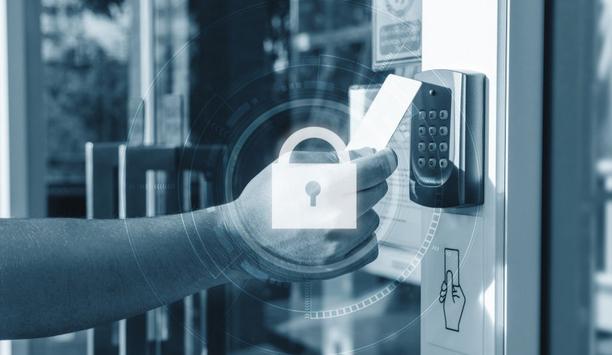
A More Secure Alternative to 125 kHz Proximity Cards
Download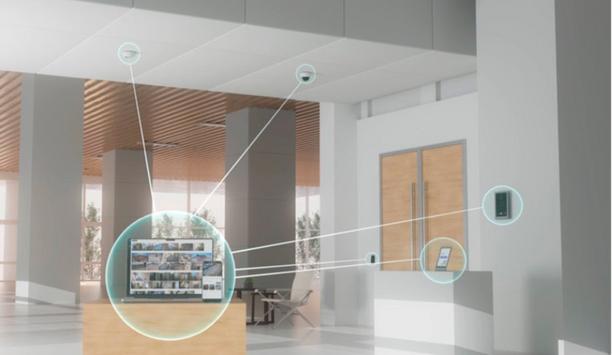
5 Ways To Strengthen Physical Security With An Integrated System
Download
Creating A Secure And Positive Healthcare Experience
Download
11 Advantages Of A Combined System For Access Control And Intrusion
Download
Integrated Access Control: Reap The Benefits Of Connected Security
Download
12 Questions To Ask Your Access Control Provider
Download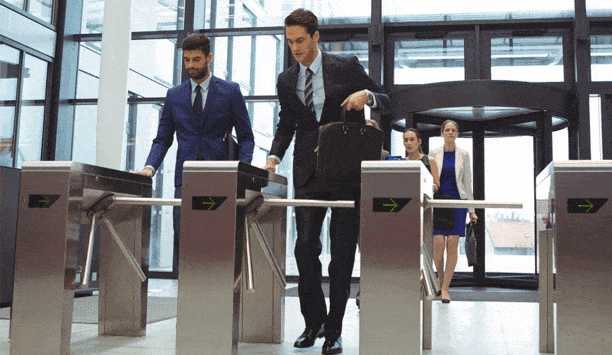
3 Reasons To Migrate To A New Access Control System
Download
OSDP Is The Strongest Access Control For Your Business
Download
The Healthy Market For Video Surveillance At Medical Facilities
Download
Effective Access Control For Museums And Public Spaces
Download
Network Security Redefined: IP-Enabled Access Control
Download
Do You Know The Weakest Link Of Your Access Control System?
Download

Videos
Door security: Manufacturers & Suppliers
- Aiphone Door security
- ASSA ABLOY Door security
- Alpro Door security
- Software House Door security
- Vanderbilt Door security
- HID Door security
- Bosch Door security
- Honeywell Security Door security
- CyberLock Door security
- Adams Rite Door security
- Briton Door security
- ASSA ABLOY - Aperio® Door security
- CDVI UK Door security
- Paxton Access Door security
- CIVINTEC Door security
- TESA Door security
- Magnetic Solutions Door security
- CLIQ - ASSA ABLOY Door security
- Codelocks Door security
- Deedlock Door security
